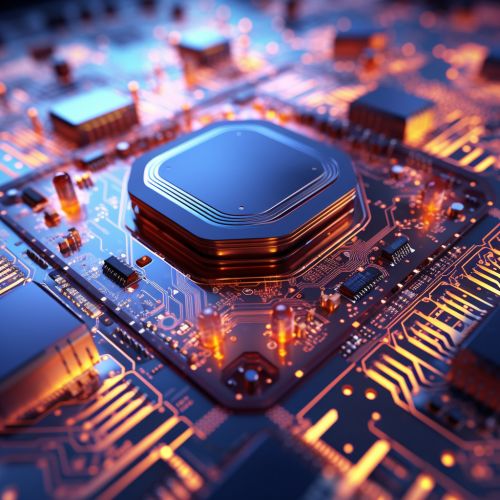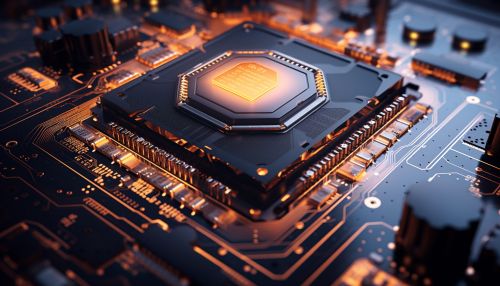Semiconductor device
Introduction
A Semiconductor device is an electronic component that exploits the electronic properties of semiconductor materials, primarily silicon, germanium, and gallium arsenide, as well as organic semiconductors. Semiconductor devices have replaced vacuum tubes in most applications. They use electronic conduction in the solid state as opposed to the gaseous state or thermionic emission in a high vacuum.


History
The understanding and use of semiconductors for electronic devices grew out of the development of quantum mechanics, which allowed the development of the transistor, invented in 1947 by John Bardeen, Walter H. Brattain, and William B. Shockley at Bell Labs. This development was directly followed by the creation of the integrated circuit (IC) by Robert Noyce at Fairchild Semiconductor and Jack Kilby at Texas Instruments.
Semiconductor Materials
Semiconductor materials are nominally small band gap insulators. The defining property of a semiconductor material is that it can be doped with impurities that alter its electronic properties in a controllable way. The physical properties of semiconductors include various anisotropic features, which can be incorporated into device design and operation.
Semiconductor Devices
Semiconductor devices are electronic components that utilize the electronic properties of semiconductor materials. They are the foundation of modern electronics, and are commonly used in applications such as signal amplification and switching. They include the transistor, many kinds of diodes including the light-emitting diode, the silicon controlled rectifier, and digital and analog integrated circuits.
Semiconductor Device Fabrication
Semiconductor device fabrication is the process used to manufacture semiconductor devices. It is a multiple-step sequence of photolithographic and chemical processing steps during which electronic circuits are gradually created on a wafer made of pure semiconducting material.
Applications of Semiconductor Devices
Semiconductor devices are ubiquitous in today's world and found in many fields. The importance of semiconductor devices has been acknowledged by the creation of the Nobel Prize in Physics for the invention of the transistor and the integrated circuit.
